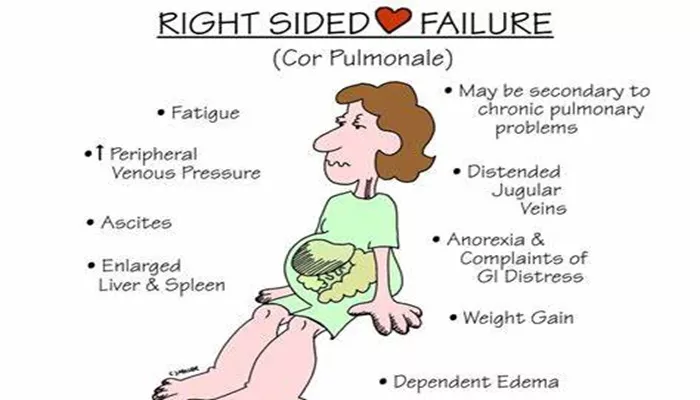Orthopnea is a medical term that describes the sensation of shortness of breath that occurs when a person lies flat. This condition is particularly prevalent among individuals suffering from heart failure, a complex syndrome characterized by the heart’s inability to pump effectively, leading to insufficient blood flow to meet the body’s needs. Understanding the mechanisms behind orthopnea is crucial for both patients and healthcare providers, as it can significantly impact quality of life and may indicate worsening heart function.
In patients with heart failure, orthopnea often manifests as a distressing symptom that can disrupt sleep and daily activities. It typically improves when the individual sits up or stands, which provides immediate relief by altering blood flow dynamics and reducing pulmonary congestion. This article will delve into the specific reasons why heart failure causes orthopnea, examining the physiological changes that occur in the body when a patient with heart failure assumes a supine position.
Mechanisms Behind Orthopnea in Heart Failure
1. Redistribution of Blood Volume
When a person with heart failure lies down, gravity no longer exerts its influence on blood flow from the lower extremities back to the heart. In a healthy individual, this redistribution of blood volume does not significantly affect respiratory function because the heart can accommodate increased venous return. However, in patients with heart failure, especially left-sided heart failure, the heart’s ability to manage this increased volume is compromised.
As blood shifts from the legs and abdomen into the thoracic cavity, it increases venous return to the right side of the heart.
The left ventricle, already weakened and struggling to pump effectively, cannot handle this sudden influx of blood.
Consequently, pressure builds up in the pulmonary circulation, leading to pulmonary congestion and edema.
see also: Why Is Albumin Contraindicated in Heart Failure?
2. Pulmonary Congestion and Edema
The accumulation of fluid in the lungs is a direct consequence of elevated pressures in the pulmonary capillaries. In heart failure patients, especially those with left ventricular dysfunction, this can lead to cardiogenic pulmonary edema. When lying flat, hydrostatic pressure increases within the pulmonary capillaries due to increased blood volume. This pressure forces fluid out of the capillaries into the interstitial spaces and alveoli of the lungs.
The presence of excess fluid in the lungs impairs gas exchange and reduces lung compliance, making it more difficult for patients to breathe deeply or effectively when lying down. This phenomenon is exacerbated by any pre-existing lung conditions such as chronic obstructive pulmonary disease (COPD) or pneumonia, which can further compromise lung function and exacerbate orthopnea.
3. Decreased Lung Compliance
Lung compliance refers to how easily the lungs can expand during inhalation. In patients with heart failure, particularly those experiencing pulmonary congestion, lung compliance decreases significantly when they lie down. The fluid buildup in the lungs stiffens lung tissue, making it less able to expand. As a result, patients experience increased work of breathing and may develop rapid shallow breathing patterns as they attempt to compensate for reduced lung capacity.
This decreased compliance means that even small increases in blood volume can lead to significant respiratory distress.
Patients may find themselves unable to take deep breaths while lying flat due to discomfort and difficulty in expanding their lungs adequately.
4. Increased Respiratory Drive
The body’s response to hypoxia (low oxygen levels) triggers an increase in respiratory rate and effort. In individuals with orthopnea due to heart failure, lying down leads to reduced oxygenation because fluid-filled alveoli cannot participate effectively in gas exchange. As a result, patients may experience heightened anxiety and panic due to their inability to breathe comfortably.
The brain’s respiratory centers react by increasing respiratory drive to compensate for low oxygen levels. This compensatory mechanism can lead to feelings of breathlessness and further exacerbate discomfort when lying flat.
5. Sleep Positioning and Orthopnea Severity
The severity of orthopnea can vary among individuals based on their specific cardiac conditions and overall health status.
Some patients may find that they require multiple pillows or even sleep in an upright position to alleviate symptoms effectively—a situation referred to as “three-pillow orthopnea.” This term indicates significant respiratory distress when lying flat.
In contrast, some patients may experience only mild orthopnea that resolves quickly upon sitting up or standing. The degree of orthopnea experienced often correlates with the severity of underlying heart failure and associated comorbidities.
Conclusion
Orthopnea is a common symptom among individuals with heart failure and serves as an important clinical indicator of worsening cardiac function. The mechanisms underlying this condition are multifaceted, involving complex interactions between hemodynamics, pulmonary physiology, and neural responses.
Understanding these mechanisms is crucial for effective management strategies aimed at alleviating symptoms and improving quality of life for patients suffering from this debilitating condition. Treatment approaches may include pharmacological interventions such as diuretics to reduce fluid overload or lifestyle modifications that encourage proper positioning during sleep.
Related topics:
- Why Calcium Channel Blockers Should Be Avoided in Heart Failure
- Why Use Beta Blockers in Heart Failure
- What Is The Reason for Heart Failure After Myocardial Infarction

